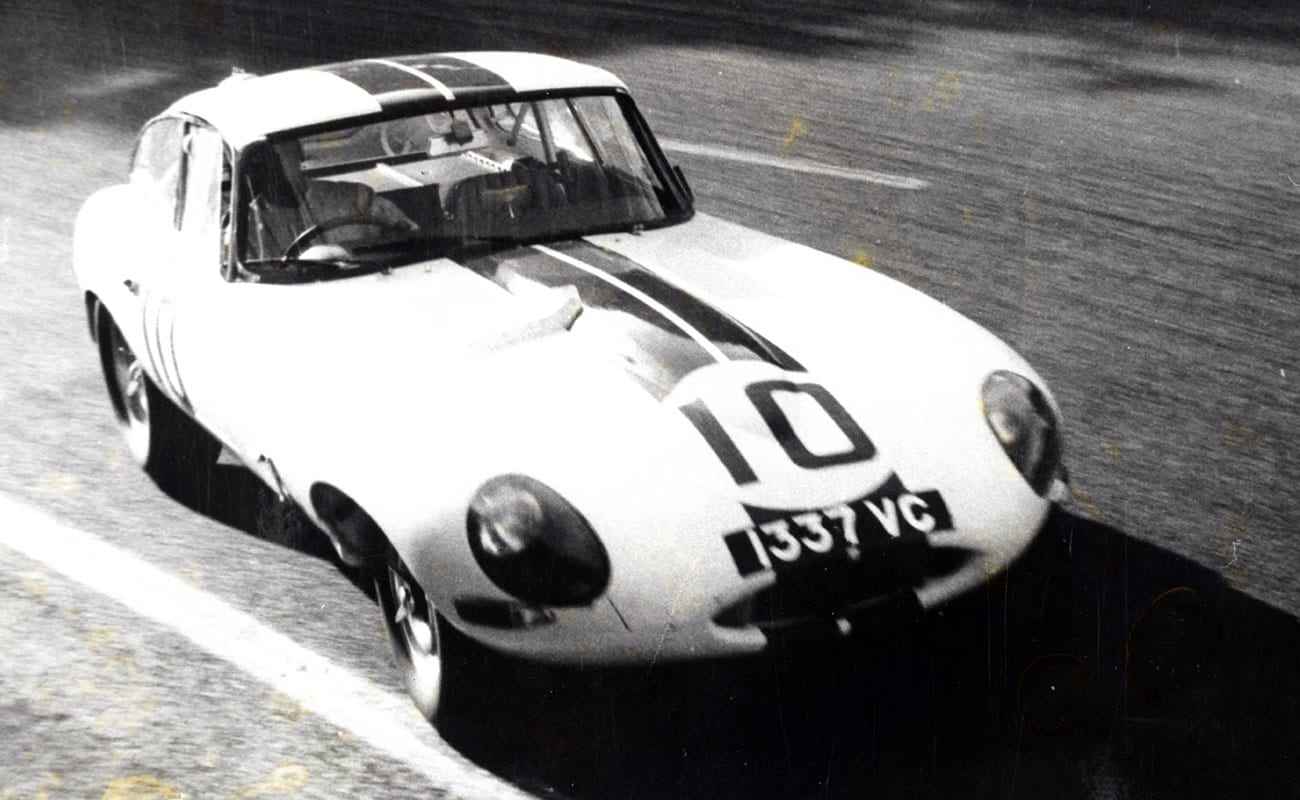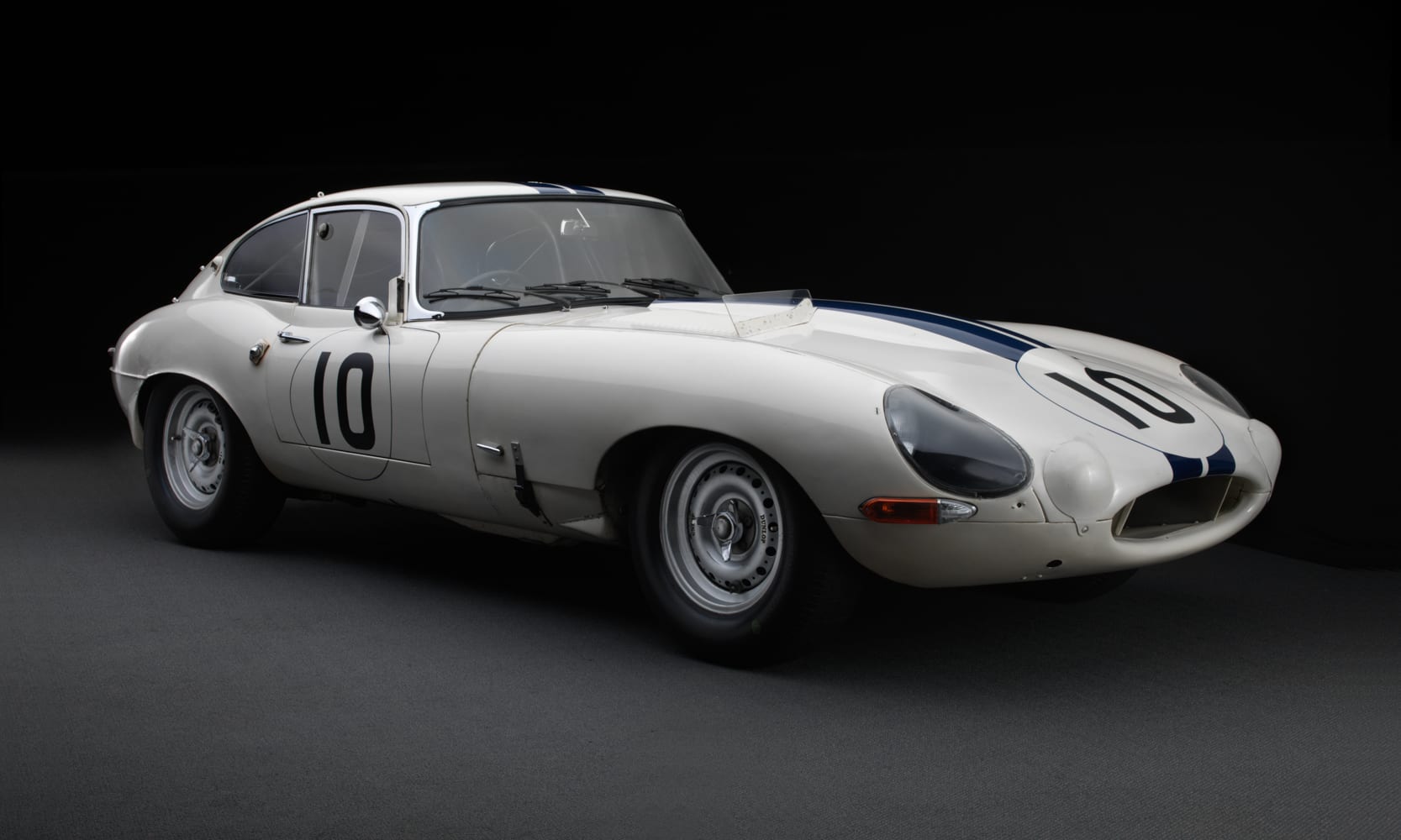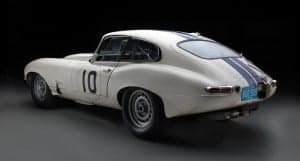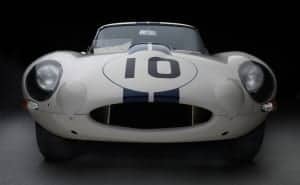Tech Specs
Six-cylinder in-line engine, double overhead camshafts, two valves per cylinder, Lucas fuel injection, 3781 cc (230.6 cubic inches), 300 hp at 6000 rpm.
Before/After
1962 Jaguar


About the 1962 Jaguar E-Type
Although the car you see here was raced, the E-Type Jaguar was first and foremost a production automobile – and, arguably, the sexiest of its era. Arguably, too, the XK-E provided history’s best modern day lesson in how to create a sensationally successful touring car out of an equally successful race car.
D-Type ancestry was evident in the E-Type’s use of monocoque structure and styling wherein the predecessor’s pugnacious look was slimmed into a slicker and sleeker package. Long rumored to be in the wings and anxiously awaited, this new sports car from Coventry created a furor when finally it appeared in March of 1961. That the road-going E-Type might follow in the competition tracks of the racing D-Type was hinted by Sir William Lyons at the Geneva Automobile Show…but only obliquely.
In effect, an E-Type prototype had been raced at Le Mans in 1960, long prior to its introduction. Briggs Cunningham entered a three-liter prototype driven by Walt Hansgen. Retiring there after setting the fastest practice lap, the car subsequently won at Bridgehampton and took a third at Elkhart Lake before discreetly retiring from the scene to make way for the production version. With Graham Hill behind the wheel, the new E-Type did win its first time out at the Oulton Park GT Trophy Race. But the decade’s most luscious GT tourer was no racer.
At Le Mans in 1962, the Cunningham team entered this factory-prepared car. Briggs Cunningham and Roy Salvadori averaged 108.87 mph for 24 hours. That speed was just 5 mph slower than the D-Type’s best average ever, and was good enough for fourth place, behind three Ferraris. In major races Jaguar’s venerable long-stroke twin-cam six just couldn’t produce the horses to counter the new three-liter cars from Maranello. For its stalwart followers, the company did subsequently build a dozen aluminum-bodied lightweight E-Types, which performed admirably in club events throughout the world. Despite such efforts, a major racing offensive was not in Jaguar’s plans. Coventry had decided that the combination of come hither looks and 150 mph performance for under $6000 was the E-Type’s sole reason for being. Which, as the sales figures indicated, was quite enough.
Photos – Peter Harholdt










